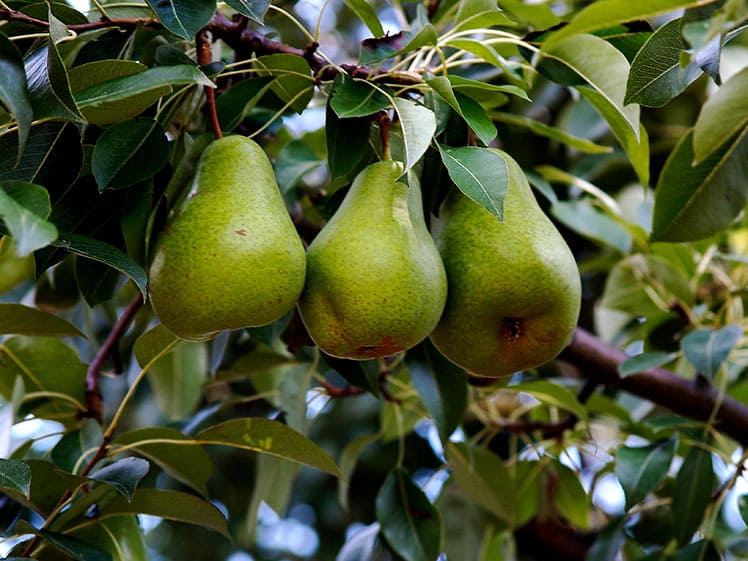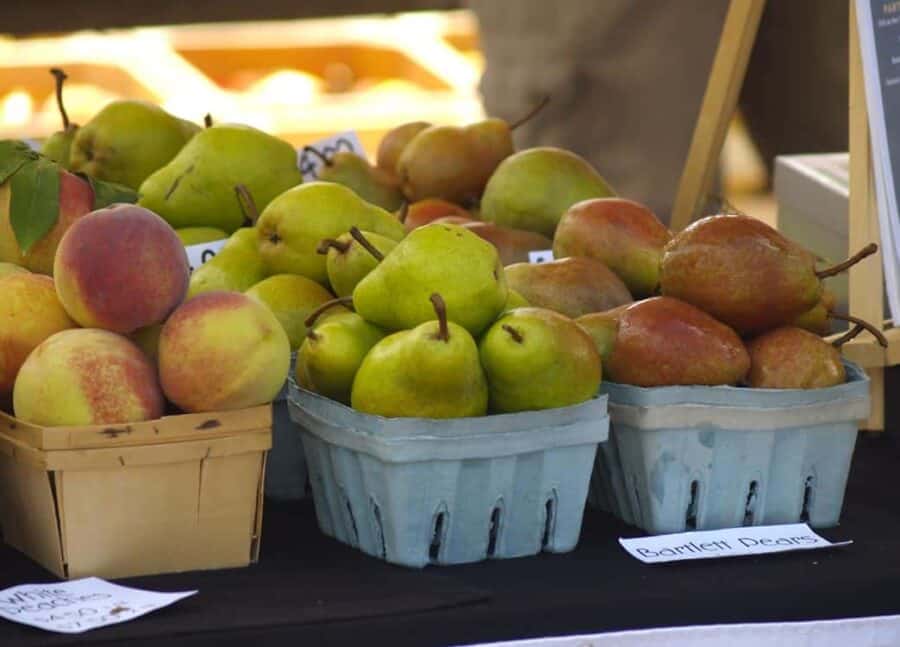By Guest Author Trey Watson.
Of all things necessary to grow fruit trees – or anything else, for that matter – soil is perhaps one of the most overlooked and underappreciated. Soil plays a pivotal role in the health of fruit trees and in how much fruit they’ll bear.
“The soil is the great connector of lives, the source and destination of all.”
Wendell Berry

Soil pH is very important for fruit trees
Soil pH is the measure of how acidic or basic a soil is, using a scale from 1-14. The number 7 on this scale is considered neutral and anything below this number is considered acidic. Anything above 7 is considered basic, or alkaline.
Fruit trees normally do well in soils with a pH range around 6-6.5, though a lower or higher pH isn’t generally a major problem. Almond trees prefer a soil pH in the 7-7.5 range. Blueberry plants grow best with a soil pH of around 5. Other plants, like Azalea, do well with a pH of 4.5 to 6. Plants that are picky about pH, like almonds, blueberries, and azaleas, don’t grow well outside of their pH range. And this probably goes without saying, but here it is anyway: very few plants of any kind grow on the extreme ends of the pH scale.
How do you know what your soil pH is? Try a soil test from a university or private lab. Some home test kits for pH are also available. Soil pH can be adjusted by adding lime to increase the pH (making the soil more basic), or by adding sulfur or a sulfur-containing fertilizer to lower the soil pH (making it more acidic).
Soil texture determines drainage, how often to water, and root development
Soil texture refers to the size of soil particles. There are 3 basic soil types: sandy, loam, and clay. As a general rule, sandy soils drain water quickly, loam soils drain water more slowly, and clay soils hold water for extended periods.
- Sandy soil has large particles (still tiny to the naked eye), but when wet and squeezed in your hand and released, sandy soil falls apart quickly.
- Loam soil has slightly smaller particles and when it is wet and squeezed, it falls apart after a few minutes.
- Clay soil is made of small particles and when it is moist and squeezed, it will hold its shape almost indefinitely.
- Most soils are a blend of the three major soil types, with many soils being classified as sandy loam or clay loam.
Here in East Texas, where I live and grow plants, and in many other parts of the southern U.S., clay soil is prominent in many places. In bottomlands and areas along rivers, the soils tend to be loam or sandy.
Fruit trees grown on sandy hilltops may need more water; fruit trees in clay soil will need less. Well-drained loam soil is generally ideal soil for garden crops and fruit trees, though with proper care garden plants and trees of all kinds can be grown in virtually every soil texture.
Soil texture also impacts how easy it is for plant roots to pass through. The roots of plants grown in sandy soil will easily spread; plants grown in clay soil will have a more limited root system. Of all the soil types, it is most challenging to grow fruit trees in clay soil. But with organic amendments like compost and mulches, clay soil can be sufficiently improved to drain.
When to fertilize fruit trees
Nutrients in the soil are the result of natural decomposition or fertilizer added by the gardener. Any soil has at least some naturally occurring nutrients, but to get a great crop of fruit, it’s almost always necessary to add fertilizer.
The three major nutrients that most gardeners know are Nitrogen, Phosphorus, and Potassium, known by their chemical symbols N-P-K. All fertilizer products sold in the United States list the nutrient content as a percentage of total weight using three numbers. For example, 10-10-10 fertilizer is 10% Nitrogen, 10% Phosphorus, and 10% Potassium, meaning these nutrients make up 10% of the total weight of the fertilizer each.
What fertilizers are recommended for fruit trees?
Most fertilizers recommended for fruit trees are balanced fertilizers like 10-10-10. Organic fertilizers tend to have lower nutrient content that is released over a longer period. They also usually have micronutrients, like calcium and magnesium, that benefit plants. Fruit trees do well with either conventional or organic fertilizer, but they do need fertilizer. The nutrient content in native soils just won’t provide adequate nutrition for a fruit tree to consistently bear fruit. The best way to know what your soil’s nutrient needs are is to take a soil test.

Nematodes and other microorganisms play a role
Microorganisms in the soil are (obviously!) invisible to the naked eye. And, like most other things in this world, there is a good and bad side to them.
Soil parasitic nematodes are a problem for fruit trees in various locations throughout the world. There is really no way to know if you have parasitic nematodes until you see the damage to the tree. Parasitic nematodes feed off the root system of the trees, causing stunted growth and reducing the nutrient uptake of the tree. Over time the weakened tree may die of disease. Soil can be fumigated for nematodes, though this is an expensive fix that may not last. Some gardeners have had limited success with soil solarization. Soil solarization involves tilling the soil and placing clean plastic sheeting over it in summer. This process can be repeated several times. Beneficial Nematodes that feed on parasitic nematodes are available from some garden supply companies. Other bad microorganisms include over-wintering fungi and bacteria.
- Most microorganisms in the soil are not harmful and many are beneficial.
- Healthy soil helps fruit trees and all plants use soil nutrients more efficiently.
- A population of beneficial microorganisms helps protect plants from diseases that enter plants through the roots.
- Beneficial nematodes keep parasitic nematodes at bay in healthy soil.
- Nitrogen-fixing plants, such as beans and peas, use certain soil bacteria to bring nitrogen from the air to the soil.
- Manure tea, compost tea, compost, and other organic matter placed around a tree or in the soil helps the soil maintain good health as the fruit tree grows.
Treat the soil nicely and it will reward you with a bountiful harvest of fruits!
Guest Author’s bio: Trey Watson is the owner of Legg Creek Farm, a nursery specializing in fruit trees, berry plants, grapevines, and other edible plants. He is also the author of numerous gardening books, including The Lazy Gardener’s Guide to Growing Citrus in Containers. He lives and grows things on a farm in East Texas with his wife and three kids.
Discover more from Big Blog of Gardening
Subscribe to get the latest posts to your email.
